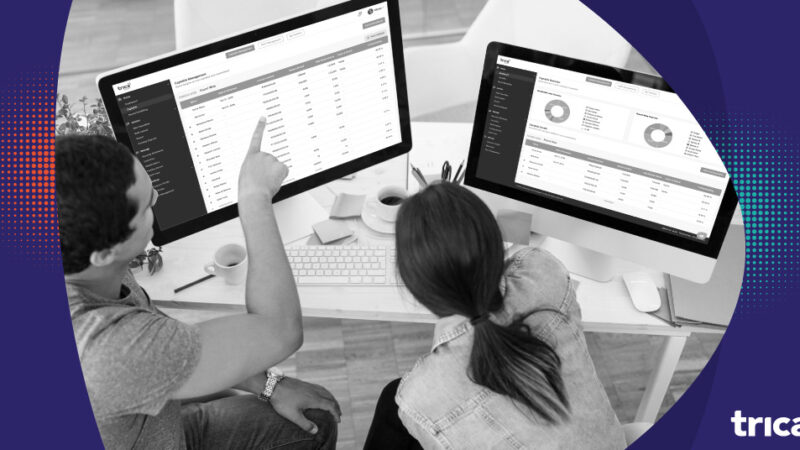
Seven ways to Cap table management in 2022 with examples & checklist
Managing a cap table is like making a job resume; you create one at the beginning of your career and keep updating it as you evolve. As your business commences, you create a cap table with equity details. With time, as your business grows and the equity structure changes, you update the cap table.
Cap table is not a one-and-done job. You need to update and manage it regularly. This ensures data accuracy that leads to informed decisions. Imagine your business gets into legal matters due to incorrect alterations and an outdated cap table. Also, you could lose business investment potential if the cap table does not show a real picture.
So, today we will look at an in-depth guide on how to manage your cap table. You will also get a checklist for managing your cap table efficiently. Let us start with the basics: what are cap tables and their components?
What is a Cap Table?
A cap table is a table that shows the equity distribution of a company. It contains details of shareholders, share prices, capital invested, and much more. Three components of the cap table are:
- List of Investors: It includes all the people and entities that invested in the company.
- Share Details: It includes the details about which investor holds how many shares against how much capital. Also, it reflects the type of shares allotted to each investor along with their voting rights. Share price, past share valuations, and other share-related details are included in the cap table.
- Share Valuation: It shows the current value of the share. Since the share value keeps changing, the company needs to update it constantly. This is crucial in the case of dilution, ESOP allotment, and the issue of shares.
The cap table should map your entire equity distribution from investors, dilution, and fundraising to the ESOP pool. But what does a good cap table look like? Let us look at an example cap table of a company after raising funds.
What Does a Good Cap Table Look Like?
A good cap table includes all the relevant data about company equity. Moreover, a summarised version of the cap table is equally critical for stakeholders. Handing over a detailed company cap table can be risky and lead to data misuse. Hence, opt for 2-3 versions depending on relevancy and need. Here is what a good cap table looks like:
Why Is Cap Table Vital for Businesses?
Investors today demand a cap table from businesses before investing. Also, they refer to the cap table from time to time for decision-making. However, more than just a basic cap table, they need a digital cap table. So, if your business used an excel sheet for the equity records, it is time to shift to a digital cap table. But why do investors prefer a digital cap table?
A digital cap table gives a unified version of the table to all the stakeholders with minimal errors. It acts as a document repository, including all the historical versions. It includes details about ESOP, employees, and all past data.
Even for the founders, the digital cap table is beneficial as it is easy to manage and update. As the business scales, the types of shares introduced grow. So, updating an excel sheet becomes an intricate task with additional labour requirements. Is it not a better option to automate and facilitate these tasks with a tool?
A digital cap table is helpful for investors and you to ease equity management. Nonetheless, digital or excel, a cap table is a must for a business. Let us look at how businesses leverage their cap tables.
- A cap table helps in the decision-making of different stakeholders.
- Founders: As a founder, you can analyze the cap table to determine the size of the ESOP pool and make informed decisions about share dilution, future payouts, etc.
- Investors: The investors get an overview of the company’s history and equity distribution. It helps them to make investing decisions. Also, the existing investors take critical decisions regarding dilution extent. They get an idea of the amount to leverage and their controlling rights.
- Employees: The employees look into the cap table to understand the ESOP benefits and the payouts they would enjoy.
- A cap table is a crucial factor for ESOP management. After analyzing the requirements of your business, you create a pool for equity compensation. Also, throughout your business life, you need to repeat this cycle to accommodate the top talent in the firm.
- A cap table helps the founder share past data and negotiations during the funding rounds. In a way, it acts as a helping hand for raising more investment.
- A cap table includes all the data, present and past, which helps the business during audits. An updated digital cap table with minimal errors is always due diligence ready.
- A cap table stores all the past data about previous investments and company equity evolution. These elements are crucial for future decision-making during funding and ESOP.
- A cap table elaborates the controlling rights of the investors: voting rights, ownership rights, dividend entitlement, ownership transfer rights, etc. This detail is crucial for present and future investors.
However, often companies can not leverage the cap table because it misses crucial information. An excel sheet is prone to errors because the companies are initially unaware of the cap table prerequisites. However, a digital cap table with various automation is easier to manage. Let us look at a checklist of mistakes to avoid in the cap table.
Cap Table Management Checklist
What are the possible mistakes in a cap table? Missing out on some information? Lack of accuracy? Not complying with the legal regulations? Not updating the cap table timely?
Companies often make these mistakes and have to bear losses. Hence, you should prioritize cap table management as critical as it is to create a cap table. Here is a cap table management checklist to avoid any mistakes.
- Company Equity Details: A cap table must include all the details about company equity such as:
- Name of shareholders with corresponding capital invested,
- Share price,
- Equity percentage of each shareholder,
- Number of shares with each shareholder,
- ESOP pool percentage and individual allotment,
- Money raised in each round,
- Employee information for ESOP management, and
- Capital brought by the founder.
- Share Details: A cap table must specify the number of shares with each investor, the share type, and controlling rights. A share can be of various types:
- Common shares
- Equity mutual funds
- Preferred shares
- Retained earnings
- Private equity investments
- Centralize Data & Shareability: A cap table should be shareable with stakeholders. Hence, the cap table should be unified for all the shareholders to access a common course of truth. Additionally, you will need to prepare a summary cap table. You can not hand over all the company’s equity data to every investor. So, decide the information you wish to share with different stakeholders and make the cap table shareable with a summarized version.
- Compliance: A cap table is a deciding document of your company that can land you in legal issues if not done right. Every country has specific laws regarding equity distribution that you should check with your legal department. Make sure that these rules are not violated to avoid litigations.
- Review: You must review your cap table regularly, on a quarterly and annual basis.
- Quarterly: Quarterly reviews are critical for ESOP management. You understand hiring needs and modify the ESOP pool accordingly.
- Annually: Annual valuations for revised share prices impact ESOP payouts. An evaluation of 409a gives a revised share price applicable for 12 months.
- Update Timely: Updating the cap table is the most prominent part of cap table management. You need to update your cap table in various scenarios. Let us look at four such cases:
- Employee Termination: In case of employee termination, you need to update the ESOP and payout if they exercise their stock options within 90 days.
- Funding Stage: At every funding round, the cap table must add all the investors and relevant details such as the number of shares, share price, capital investment, etc.
- Corporate Restructure: Corporate restructure includes modifying business capital structure. It involves changing the share types and rights of the investors. This demands updates with a lot of intricacy and calculations.
- Merger and Acquisition: Just like in a funding round, at the time of mergers and acquisitions, it is vital to add, eliminate or modify the investors and their details.
Go over this cap table management checklist to avoid litigations and leverage its fullest extent. A digital cap table eases this process with the power of automation. Adding details and providing a centralized view is easier with a digitized version. The versions are synced, and calculations are effortless. Now, let us go over some tips for cap table management.
Tips for Managing Cap Table Efficiently
Cap table management is not difficult if done right with the help of the proper tools. Managing the cap table is about understanding business needs, analyzing the impact on equity, and updating the cap table accordingly. Here are 4 tips for effortless cap table management.
- Pre-decide ESOP Pool: If your company opts for equity compensation, then analyze the hiring needs and create an ESOP pool beforehand. This will clarify the ESOP allotment and the dilution for each strategic position. Add all employee details to the cap table for better ESOP management.
- Delegate: Cap tables can become complex with time bringing more calculations, intricacy, and legal obligations. You should delegate the cap table management task to someone from a legal background. It would ensure all the relevant details and avoid errors on the legal jurisdiction grounds.
- Summarize: All the stakeholders do not need a complete cap table for decision-making. An investor doesn’t need to know about ESOP payout as it doesn’t concern them. Similarly, an employee need not know about every shareholder in the company. You should decide how much information to share with each stakeholder and create a summary cap table accordingly.
- Right Tools: A digital cap table is better than an excel sheet. There are various plug-ins/ calculators available for creating a digital cap table on the internet. However, the cap table needs to be updated throughout business life. Hence, it raises the need to invest in a tool for creating a cap table. Find the right equity management tool which helps you with cap table management.
Cap table management is easy with the right tool. A cap table can easily be updated, summarized, and managed. Also, automation makes the task a breeze. But what options do we have for equity management tools? What should we look for when picking a cap table tool?
Conclusion: Finding the Right Cap Table Management Tool
Not every cap table management tool is the same. Many options are available in the market, but not everyone helps in efficient equity management. So, If you are planning to get a cap table tool to digitize and manage your equity, look out for these features:
- The cap table should ease the process of managing equity as the business scales. You need options to change the share type, perform complex calculations, modify ESOP, and more. The biggest pro of shifting from Excel to the digital cap table is the ease of management as business scales. So, ensure that your tool helps you with that.
- The tool should be easy to use. If the product is complex to understand and update, it defeats the purpose of switching from an excel sheet. You should not have to hire more people to manage the cap table. A cap table should save money and time and not vice versa.
- The cap table should accommodate various share types and handle complex calculations. As the business grows, these intricacies increase the equity management challenges. So, opt for a tool that allows updating share types and doing computations with minimal effort and steps.
trica, an equity management tool, is one such tool that helps you digitize and manage your cap table seamlessly. You can create a digital cap table in simple steps and update it in one click with automation. It makes your cap table due diligence ready within a few clicks. Moreover, It allows you to pay as your business grows with a freemium model for up to 100 users. Businesses can leverage features like digital shares, round modeling calculators, and one-click conversions.
Maintaining a cap table is easier with Trica!
ESOP & CAP Table
Management simplified
Get started for free





